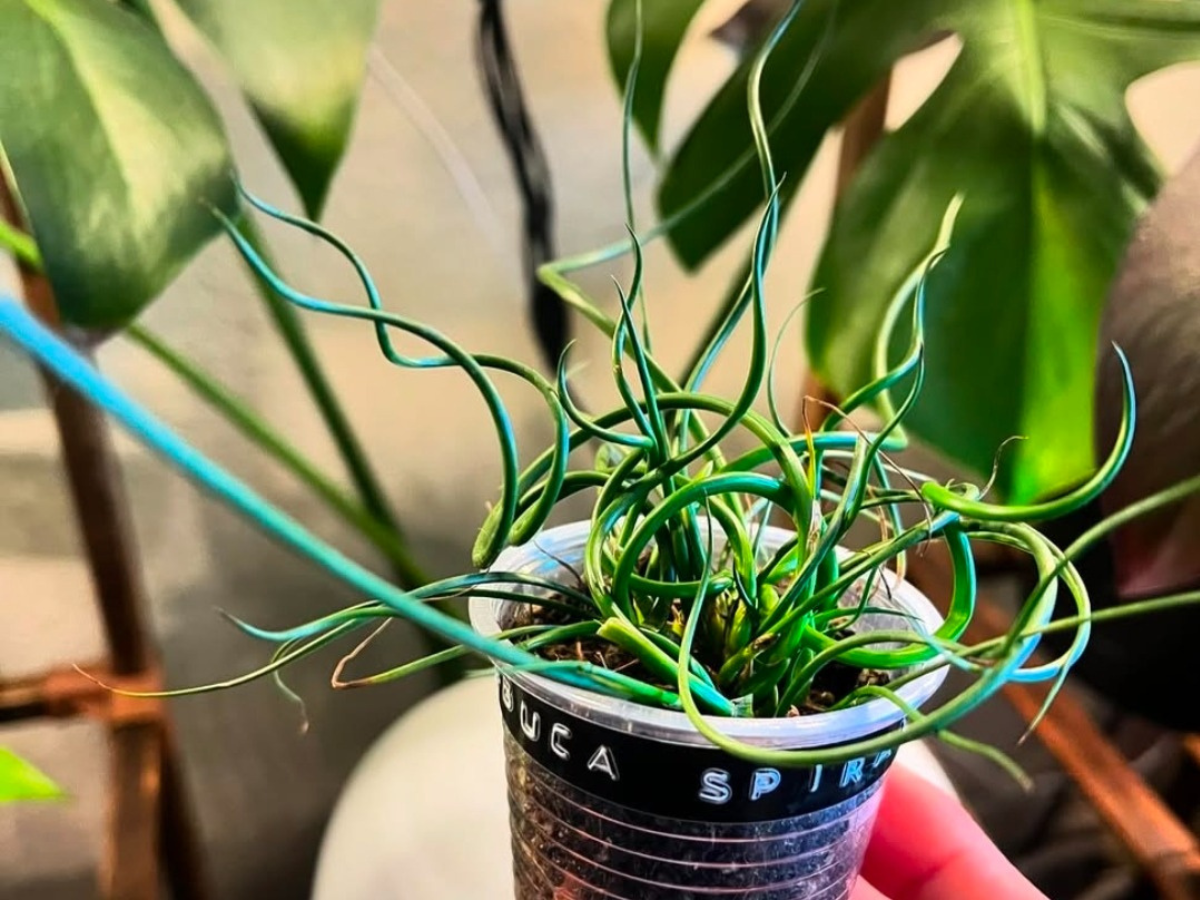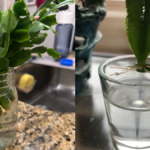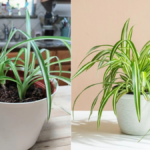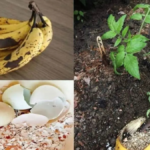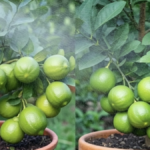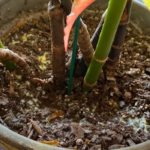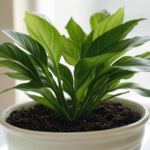How to Care Corkscrew Plant– Corkscrew plant care is easy and rewarding when you understand the seasonal needs of this fascinating curly plant. Also known as Albuca spiralis or Frizzle Sizzle, this plant is popular for its tightly coiled, spiral-shaped leaves and attractive yellow flowers. It grows from a bulb, and with the right water, light, and soil, it can stay healthy year-round—even though it naturally goes dormant in summer.
I have personally grown the corkscrew plant both indoors and on my balcony in Gujarat’s dry climate. Based on my experience, I’m sharing a complete care guide in simple, natural language that will help anyone, from beginners to gardening lovers.
IN THIS ARTICLE
About Corkscrew Plant (Albuca Spiralis)
The corkscrew plant is a small, bulb-forming succulent native to South Africa. It’s loved for its unique spiral leaves and seasonal flowers. It grows actively in cooler months and enters dormancy in hot summer conditions. If you know when to water it and when to leave it alone, this plant can live happily for years.
| Feature | Description |
|---|---|
| Botanical Name | Albuca Spiralis |
| Common Names | Corkscrew Plant, Frizzle Sizzle |
| Type | Bulbous succulent |
| Height | 6 to 12 inches |
| Light | Bright, indirect sun |
| Watering | Low to moderate |
| Soil | Well-draining, sandy or cactus soil |
| Bloom Time | Winter to early spring |
| Dormancy | Summer |
| Indoor/Outdoor | Both (preferred indoors) |
Quick Tips – How to Care Corkscrew Plant
- Use sandy, well-draining cactus soil mix
- Water only when the topsoil is fully dry
- Provide bright but indirect sunlight
- Do not water during dormancy (summer months)
- Fertilize once a month during active growth
- Keep it in a pot with drainage holes
- Avoid misting or keeping in high humidity
Watering Corkscrew Plant – The Most Important Step
From my own experience, watering is the most crucial part of growing the corkscrew plant successfully.
- During winter to early spring (active growth season), water only when the top 2-3 inches of soil feels dry.
- I usually water it once a week in winter, and the spiral leaves grow beautifully.
- In summer (dormant period), reduce watering to once every 15–20 days or stop completely if the leaves dry up.
- Overwatering is the biggest mistake; the bulb may rot.
- Always use a pot with drainage holes to avoid soggy soil.
My Tip: I use the finger test—if the soil feels even slightly moist, I skip watering that day.
Best Soil for Corkscrew Plant
Albuca spiralis loves well-draining, airy soil that doesn’t hold too much water.
- I use a custom mix of:
- 50% cactus or succulent potting soil
- 30% coarse sand or perlite
- 20% compost or cocopeat
- Avoid garden soil or clay-based soils—they trap water and suffocate the bulb.
Extra Tip from Experience: I also add a thin layer of pebbles at the bottom of the pot for better drainage.
Sunlight Requirements for Spiral Leaf Growth
To keep the leaves curly and tight, the plant needs plenty of bright, indirect sunlight.
- Indoors: Place near an east or west-facing window where the plant gets filtered light.
- Outdoors: Keep in a shaded balcony or under a green net.
- Avoid placing it in harsh direct sunlight, especially in the afternoon.
- During winters, the plant must get 4 to 6 hours of sunlight daily to produce healthy spirals.
From my setup: I keep mine on a raised shelf near a west-facing window, and it grows tight spirals every year.
Humidity and Temperature
Corkscrew plant prefers dry conditions and moderate room temperatures.
- Ideal temperature range: 15°C to 25°C
- Can survive short cold spells but not frost
- Humidity should be low to moderate; avoid misting the plant
- It is perfect for indoor growing in Indian homes or balconies
Fertilizing the Plant
Frizzle Sizzle grows best when it receives light feeding during its growth cycle.
- Use a diluted liquid fertilizer (balanced like 10-10-10) once every 4–5 weeks during winter and spring
- Avoid feeding when the plant goes dormant
- Too much fertilizer can cause leaf burn or soft spirals
- I use organic seaweed extract at half-strength and have seen better flowering results
Propagating Corkscrew Plant (Albuca Spiralis)
The propagation method I use is bulb separation, and it’s very easy if you follow these steps:
Step-by-Step Bulb Propagation:
- Wait for the plant to go dormant and leaves to dry up
- Gently remove the plant from the pot and shake off excess soil
- You’ll see small baby bulbs (offsets) around the main bulb
- Gently separate them with hands
- Let bulbs sit in shade for a day to dry
- Replant each bulb in separate pots using fresh cactus soil mix
- Water lightly after 3-4 days
New growth usually appears after 2–3 weeks, especially in cooler weather.
Understanding Dormancy – Don’t Get Confused
Many beginners panic when the corkscrew plant starts turning yellow and looks dead in summer. This is a normal process.
- In high heat, the plant goes dormant
- Leaves dry up or fall off completely
- You must stop watering or reduce to once a month
- No fertilizer during dormancy
- Keep the bulb in a dry, cool spot until autumn
In my case, after 3 months of dormancy, I saw fresh green spirals returning with winter rains.
Common Mistakes to Avoid
- Overwatering – causes bulb rot
- Using regular garden soil – poor drainage suffocates roots
- Too much sunlight – burns spiral leaves
- Fertilizing in dormancy – damages the bulb
- Mistaking dormancy for death – don’t throw it away!
My Real Experience with Corkscrew Plant
When I first bought the plant, I didn’t know about its summer dormancy, and I almost threw it away thinking it had died. But luckily, I kept the pot aside, and after 3 months, green curly leaves started growing again. Since then, I water it only when the soil is dry and avoid watering during dormancy. Each winter, the spiral shape becomes even stronger, and small yellow flowers bloom with a light sweet scent.
I’ve also gifted small bulbs to friends, and they’ve had success following the same method.
FAQ – Corkscrew Plant care guide
Why are the leaves of my corkscrew plant turning yellow?
Yellow leaves usually mean your corkscrew plant is going into dormancy, especially during summer. It’s a natural process. Reduce watering and let the plant rest. New green spirals will grow again in winter.
How often should I water my corkscrew plant?
Water only when the top 2-3 inches of soil is dry. During the growing season (winter to spring), water once a week. During dormancy (summer), water only once every 15–20 days or stop completely if all leaves are gone.
Is corkscrew plant safe for pets?
While there’s limited research, it’s best to keep corkscrew plant away from pets and children, especially because it grows from a bulb which might cause mild stomach issues if eaten
Conclusion
Caring for the corkscrew plant (Albuca spiralis) is simple once you understand its seasonal behavior. It’s a low-maintenance, eye-catching plant that grows best with bright light, well-drained soil, and careful watering. Avoid overwatering, and let it rest during summer dormancy. Based on my own gardening journey, this plant is a wonderful choice for those who want something unique and rewarding to grow.
With a little patience and right technique, your corkscrew plant will spiral with beauty every winter.
Read more Post
